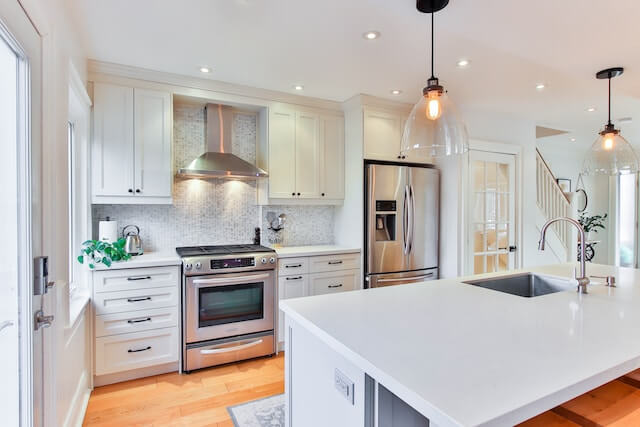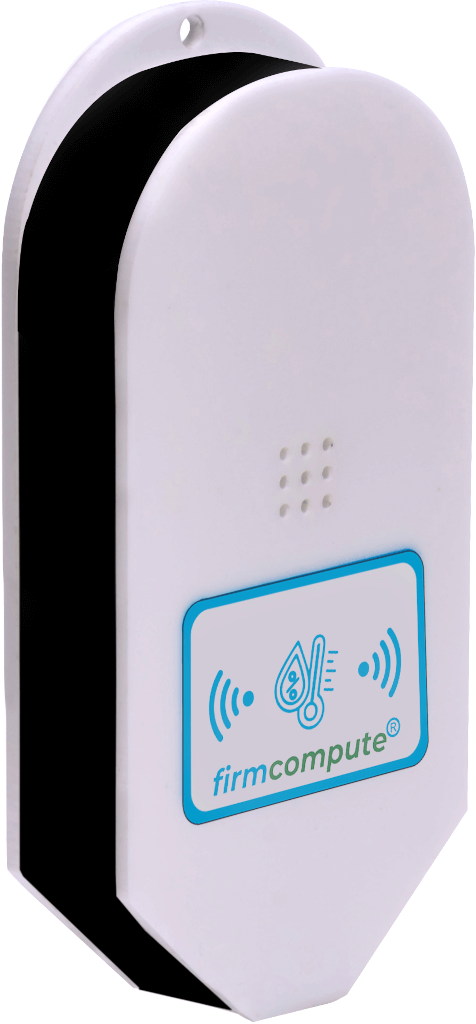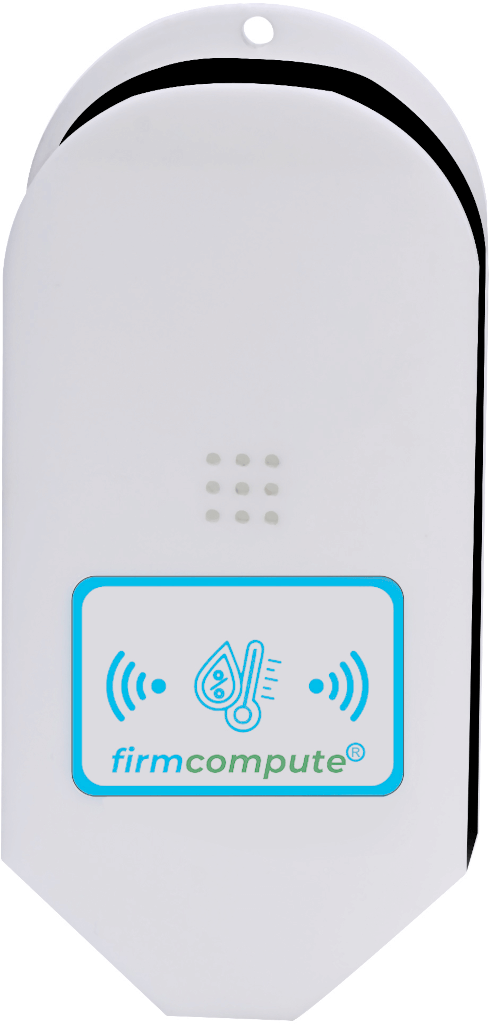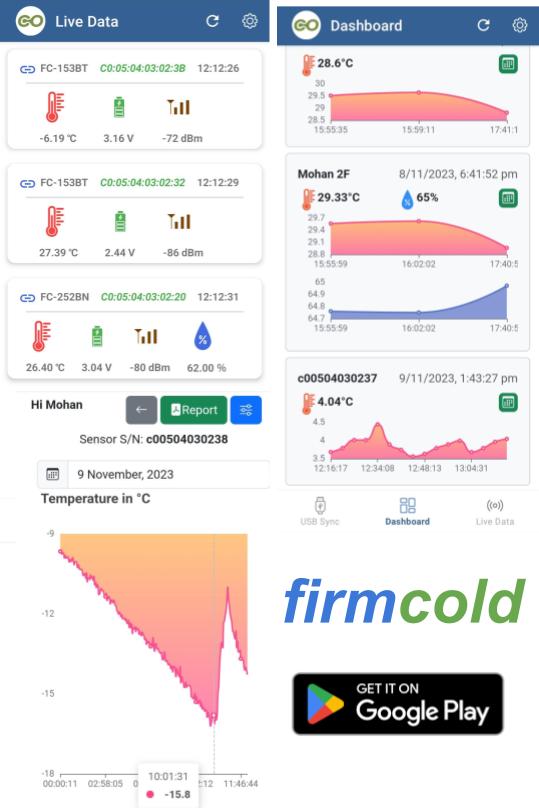fc-126 BH
Wireless Temperature and Humidity Monitoring for Hotels, Baby Rooms, and Pet Kennels.
- Protect Pets, Babies from Heat-Stroke with 24x7 Smart-Home Temperature monitoring
- 24-month cloud data; No charging; No wi-fi; No external power needed.
- No Hub needed, works directly with Android Mobile + firmcold App
- Made in India, also works with FC-G27 Sensor System
FC-126 BH - Wireless Temperature and Humidity monitoring for Hotels, Baby rooms, pet kennels can be used as a monitor in a wide variety of applications including: Pet Kennels, Kitchen Spaces, Work & Living Spaces,
Buy now:

Specification
| Real-time transmission | : Yes |
| Display | : No |
| Real-time Cloud Logging | : Yes, need firmcold App or FC series Gateway |
| Cloud Reports & Storage | : Yes, 24 months |
| Temperature | : |
| Min | : +10 °C |
| Max | : +75 °C |
| Accuracy | : 1.5 °C |
| Humidity | : |
| Min | : 0% |
| Max | : 100% |
| Accuracy | : 2% |
| Battery | : |
| Type | : Lithium primary |
| Voltage | : 3.0 V DC |
| Nominal capacity | : 500 mAh |
| Communication Technology | : BLE Wireless |
| Dimensions | : 8.6 x 4.1 x 1.7 cm |
Features
24-month active life, in-built battery
Works with Android
No WiFi , No Configuration, Un-box & Start instantly
Access 24-month data Online
Download and share reports in PDF

Pet Kennels
Maintaining a consistent and comfortable environment within the recommended temperature and humidity ranges is crucial to ensuring the well-being, health, and comfort of the animals staying in pet kennels or boarding facilities. Regular monitoring and adjustment of environmental conditions help create a safe and stress-free environment for the animals under care. The recommended temperature and humidity ranges in pet kennels typically aim to provide a stress-free and healthy setting for the animals under care.
Temperature: Pet kennels often maintain a temperature range that is comfortable for various animals, typically between 18 degrees Celsius (64 degrees Fahrenheit) and 27 degrees Celsius (80 degrees Fahrenheit). This range ensures that the environment is neither too hot nor too cold for the animals and helps prevent discomfort or stress.
Humidity: The recommended relative humidity (RH) in pet kennels generally falls within the range of 40% to 60%. This level of humidity helps maintain a comfortable environment for the animals and reduces the risk of respiratory issues or skin problems caused by excessively dry or humid conditions.
Additionally, some pet kennels may have specific temperature and humidity requirements tailored to the needs of particular animals or breeds. For example, facilities housing reptiles or amphibians might have specialized enclosures that require specific temperature and humidity conditions based on the species' natural habitat.

Kitchen Spaces
Monitoring temperature and humidity in kitchens is crucial to maintaining food safety, quality, and operational efficiency. The ideal temperature and humidity ranges in kitchens are typically as follows:
Temperature: Kitchens generally maintain temperature ranges that align with food safety regulations, often keeping the ambient temperature between 0 degrees Celsius (freezer storage) and 4 degrees Celsius (refrigerator storage) for perishable food items. Additionally, hot food holding areas are often kept above 60 degrees Celsius to prevent bacterial growth. The kitchen environment, where food preparation occurs, is typically maintained around 20–25 degrees Celsius for comfort and efficient cooking.
Humidity: The recommended humidity level in kitchens usually falls between 30% and 50%. This range helps prevent excessive moisture that can lead to mold growth or affect the quality of food items, but it's also enough to prevent dryness in certain food storage areas.

Work & Living Spaces
The most comfortable temperature and humidity for humans while living and working can vary depending on individual preferences, the nature of the work environment, and specific tasks being performed. The
recommended indoor temperature for most living or work environments is typically between 20 degrees Celsius (68 degrees Fahrenheit) and 24 degrees Celsius (75 degrees Fahrenheit). This range is often considered comfortable for a majority of individuals.
The recommended relative humidity (RH) in indoor work environments is generally between 40% and 60%. This range helps maintain a comfortable atmosphere without being too dry or too humid.
Regular assessments, feedback from household, guests, employees, and adjustments based on the nature of the work and environmental conditions help create an optimal working environment that fosters productivity and well-being.



